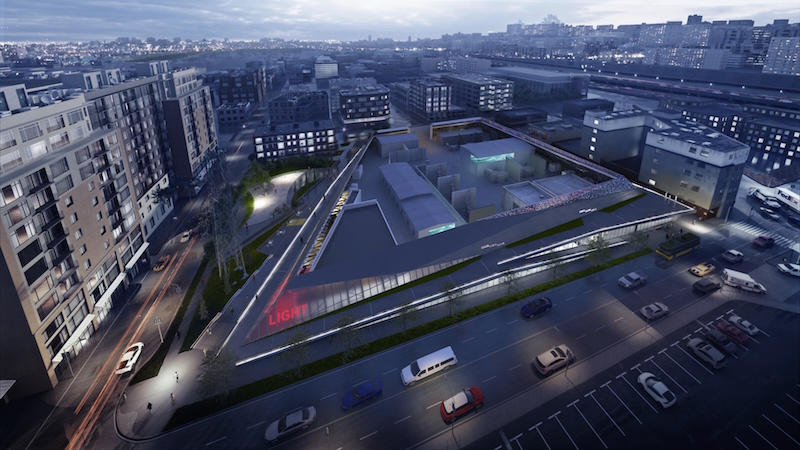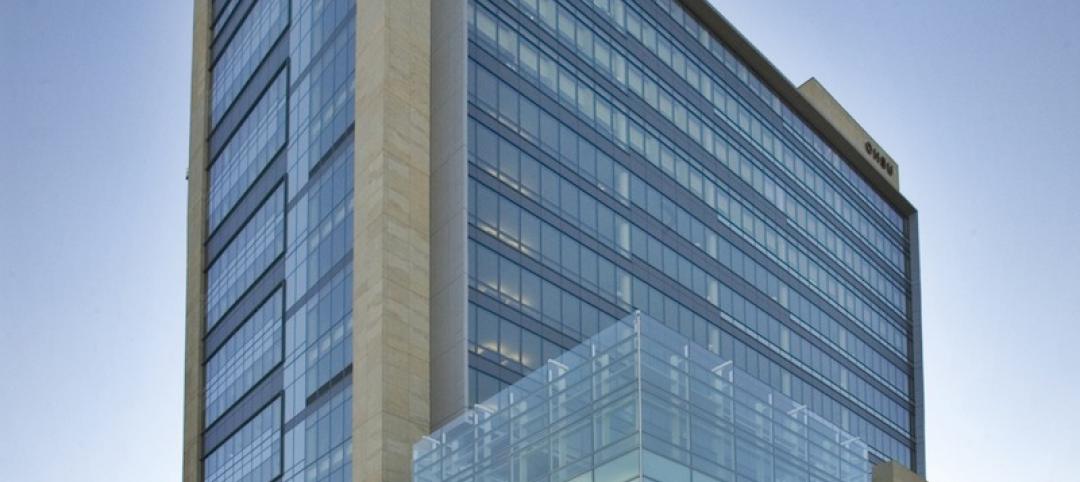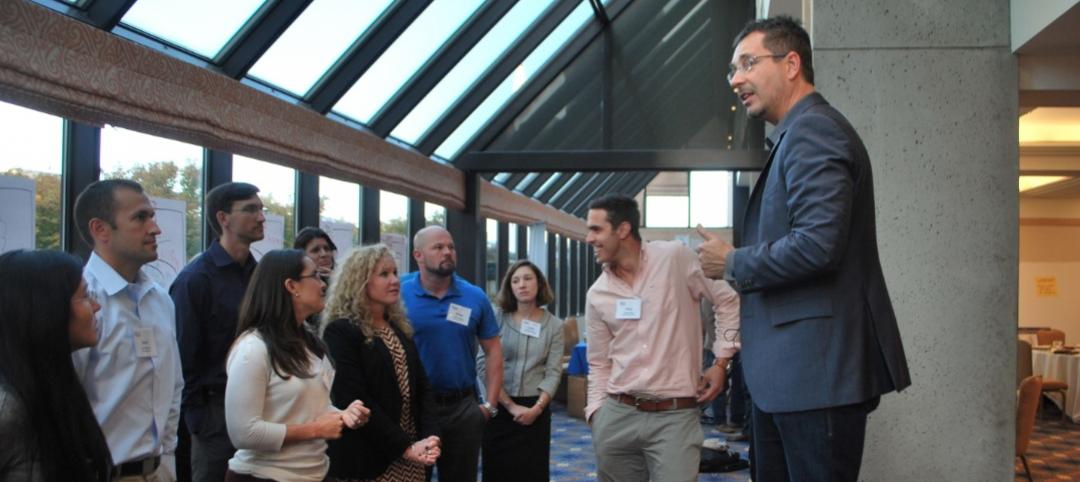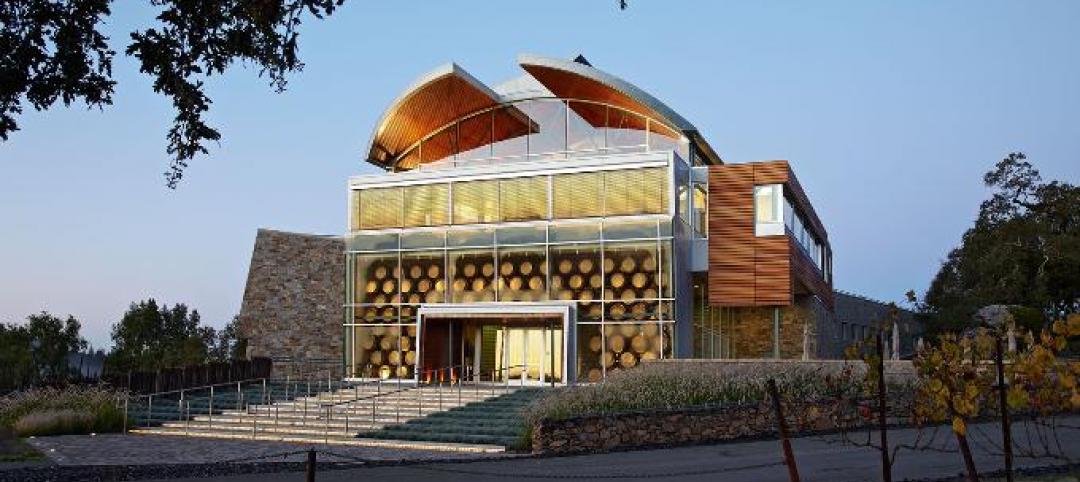Five years ago, it was apparent that Seattle’s urban redevelopment was expanding at a pace that would require more electrical output. Adding urgency to the city’s growth plans was the fact that its aging Broad Street substation was reaching its load limits, and part of that substation’s feeder system would be de-energized over time to accommodate the construction of the Alaskan Way Viaduct replacement tunnel.
Seattle City Light, the city-owned electrical utility, finally got design approval in 2012 for the Denny Substation, which had been in the works for nearly a decade. Soon after, Amazon announced that it would build its massive new headquarters complex along the Denny Way thoroughfare. “That made all of us look smart,” says Michael Clark, PMP, Seattle City Light's Program Manager on the Denny Substation project.
Seattle City Council gave this $209 million substation—the first to be built in Seattle in 30 years—the final go-ahead in August 2015. Construction of the 110,000-sf substation began nine months later on a 120,000-sf lot where a decommissioned Greyhound bus maintenance terminal once stood. Seattle City Light expects Denny Substation to be operating by late 2018.
What makes the Denny Substation different from similar facilities is that it is designed to invite people to the site and offer them recreational activities. The project has 44,000 sf of open space and an off-leash dog park, plus an ADA-accessible quarter-mile walking loop that rises 16 feet above street level to provide pedestrians views of a public park, a landscaped terrace, and the cityscape.
One side of the building will include an area that can accommodate food trucks and other open-space activities. The design incorporates a learning center that provides information about Seattle City Light and how it promotes renewable energy. The substation will be powered by 89.9% hydroelectric energy and 3.9% wind energy, with exhibition and meeting spaces producing more power than they expend.
Metal-clad walls, 35 feet high, slope inward toward the substation, reducing its mass at the pedestrian level. Translucent glass panels will emit a soft glow at night.
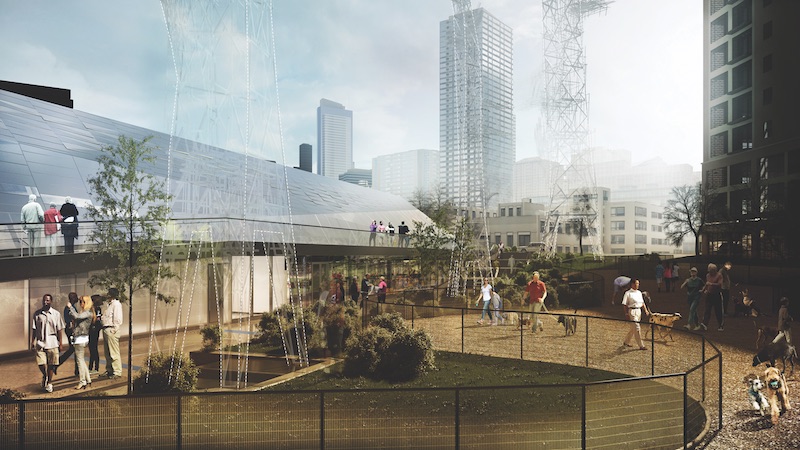 An off-leash dog park at Denny Substation. Project team: NBBJ (architect), Power Engineers (electrical design), KPFF Consulting (SE, CE), Shimmick Construction (underground network distribution system), and The Walsh Group (GC). Image Courtesy NBBJ.
An off-leash dog park at Denny Substation. Project team: NBBJ (architect), Power Engineers (electrical design), KPFF Consulting (SE, CE), Shimmick Construction (underground network distribution system), and The Walsh Group (GC). Image Courtesy NBBJ.
The city mandated that 1% of this project’s budget be spent on public art. Built into the corners of the substation are two commissioned pieces. "Switchwall," by artist Ned Kahn, consists of a series of “switches” that move when the wind blows and turn on different-colored LED lights, creating a moving pattern. "Transforest," by Lead Pencil Studio’s Annie Han and Daniel Mihalyo, is a 120-foot-high tower installed in the open space, which combines the beauty of the Pacific Northwest with the history of local power generation and transmission.
Community input and debate are integral to the city’s design-review process, known as The Seattle Way. “A utility must serve other than just its mission,” explains Clark. The dog park and walkway came out of this process, to provide public offsets for vacating a nearby street.
The site also needed extensive environmental cleanup, which required digging 40 feet below grade to remove soil contaminated by diesel fuel from the bus terminal.
Seattle City Light commissioned NBBJ to design the substation partly because of the firm’s reputation for developing concepts that all stakeholders could embrace. “There was substantial outreach, and we took the opportunity to invite the community into the process,” says Carl Tully, AIA, LEED AP, Principal and NBBJ’s project manager for the substation.
Tully credits Clark, who has been on the city’s redevelopment committee since 2002, with keeping the substation project in play. As for NBBJ’s contribution, he says, “We opened the city’s eyes to what’s possible, not just to cloak or cover up the building, but to make it a point of civic engagement.”
Tully says the design needed to account for “fixed parameters” that include a high-pressure fluid-filled 115-kV transmission cable that runs through the property. Some of the facility’s electrical equipment is quite tall, so NBBJ relocated them to the interior and placed lower equipment to the periphery. This helped reduce the scale of the substation and created opportunities for elevated walkways and occupiable space, says Tully.
He believes the concept for the Denny Substation—taking public infrastructure and creating public space—could be duplicated in other cities. But Clark doesn’t think Seattle will need another substation of this magnitude for some time. “The buildings going up are exercising much better power management, so our load has remained relatively flat,” which also means future revenues could be lower.
Clark suggests that with more cities moving toward microgrids for growing neighborhoods, there could be a need for smaller substations to support them.
Related Stories
| Nov 13, 2013
Installed capacity of geothermal heat pumps to grow by 150% by 2020, says study
The worldwide installed capacity of GHP systems will reach 127.4 gigawatts-thermal over the next seven years, growth of nearly 150%, according to a recent report from Navigant Research.
| Nov 8, 2013
S+T buildings embrace 'no excuses' approach to green labs
Some science-design experts once believed high levels of sustainability would be possible only for low-intensity labs in temperate zones. But recent projects prove otherwise.
| Nov 6, 2013
Energy-efficiency measures paying off for commercial building owners, says BOMA study
The commercial real estate industry’s ongoing focus on energy efficiency has resulted in a downward trend in total operating expenses (3.9 percent drop, on average), according to BOMA's Experience Exchange Report.
| Oct 30, 2013
11 hot BIM/VDC topics for 2013
If you like to geek out on building information modeling and virtual design and construction, you should enjoy this overview of the top BIM/VDC topics.
| Oct 28, 2013
Urban growth doesn’t have to destroy nature—it can work with it
Our collective desire to live in cities has never been stronger. According to the World Health Organization, 60% of the world’s population will live in a city by 2030. As urban populations swell, what people demand from their cities is evolving.
| Oct 18, 2013
Meet the winners of BD+C's $5,000 Vision U40 Competition
Fifteen teams competed last week in the first annual Vision U40 Competition at BD+C's Under 40 Leadership Summit in San Francisco. Here are the five winning teams, including the $3,000 grand prize honorees.
| Oct 18, 2013
Researchers discover tension-fusing properties of metal
When a group of MIT researchers recently discovered that stress can cause metal alloy to fuse rather than break apart, they assumed it must be a mistake. It wasn't. The surprising finding could lead to self-healing materials that repair early damage before it has a chance to spread.
| Oct 7, 2013
10 award-winning metal building projects
The FDNY Fireboat Firehouse in New York and the Cirrus Logic Building in Austin, Texas, are among nine projects named winners of the 2013 Chairman’s Award by the Metal Construction Association for outstanding design and construction.
| Sep 24, 2013
8 grand green roofs (and walls)
A dramatic interior green wall at Drexel University and a massive, 4.4-acre vegetated roof at the Kauffman Performing Arts Center in Kansas City are among the projects honored in the 2013 Green Roof and Wall Awards of Excellence.
| Sep 19, 2013
What we can learn from the world’s greenest buildings
Renowned green building author, Jerry Yudelson, offers five valuable lessons for designers, contractors, and building owners, based on a study of 55 high-performance projects from around the world.


